Jill Biden, First Lady to Joe Biden (2021—)
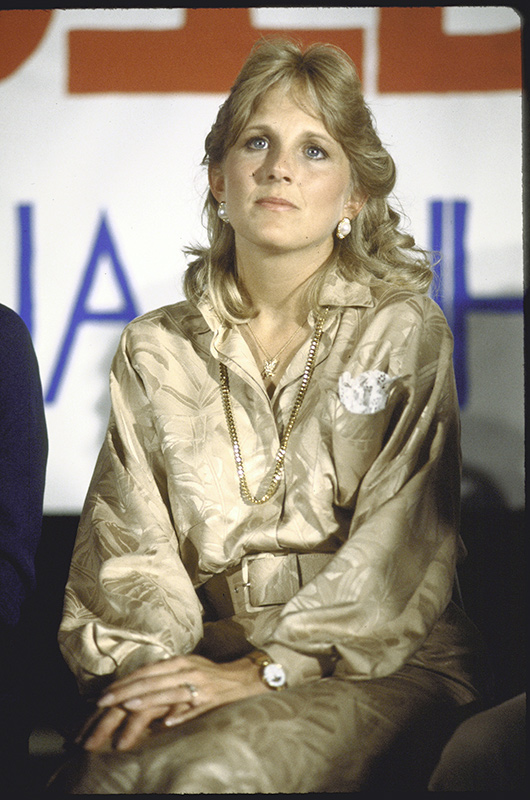
Dr. Jill Biden, our current First Lady, is an esteemed educator and an accomplished author. She remains wholeheartedly dedicated to education while championing initiatives that benefit military families and veterans.
Melania Knavs Trump, First Lady to Donald Trump (2017-2021)
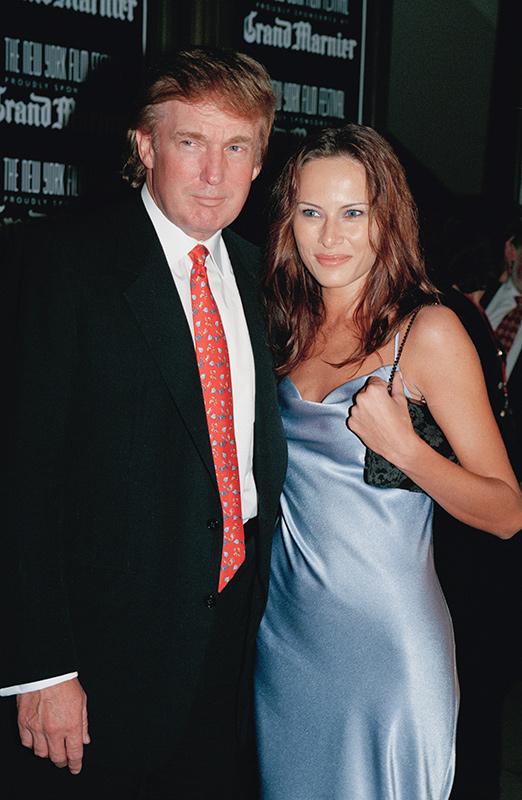
Melania Trump, originally Melania Knavs, was a successful model before becoming Mrs. Trump and begrudgingly moving into the White House. During her tenure as First Lady, she took an interest in cyberbullying and the well-being of children. Her notable campaign, "Be Best," was established with the intention of fostering the social and emotional health of our young ones.
Michelle Obama, First Lady to Barack Obama (2009-2017)

During her tenure as the First Lady from 2009 to 2017, Michelle Obama focused on championing causes related to health and wellness. One of her most notable initiatives was the "Let's Move!" campaign, which aimed to tackle childhood obesity head-on. The 25th First Lady also actively supported educational endeavors through programs like "Reach Higher," inspiring young students to pursue higher education.
Laura Bush, First Lady to George W. Bush (2001-2009)
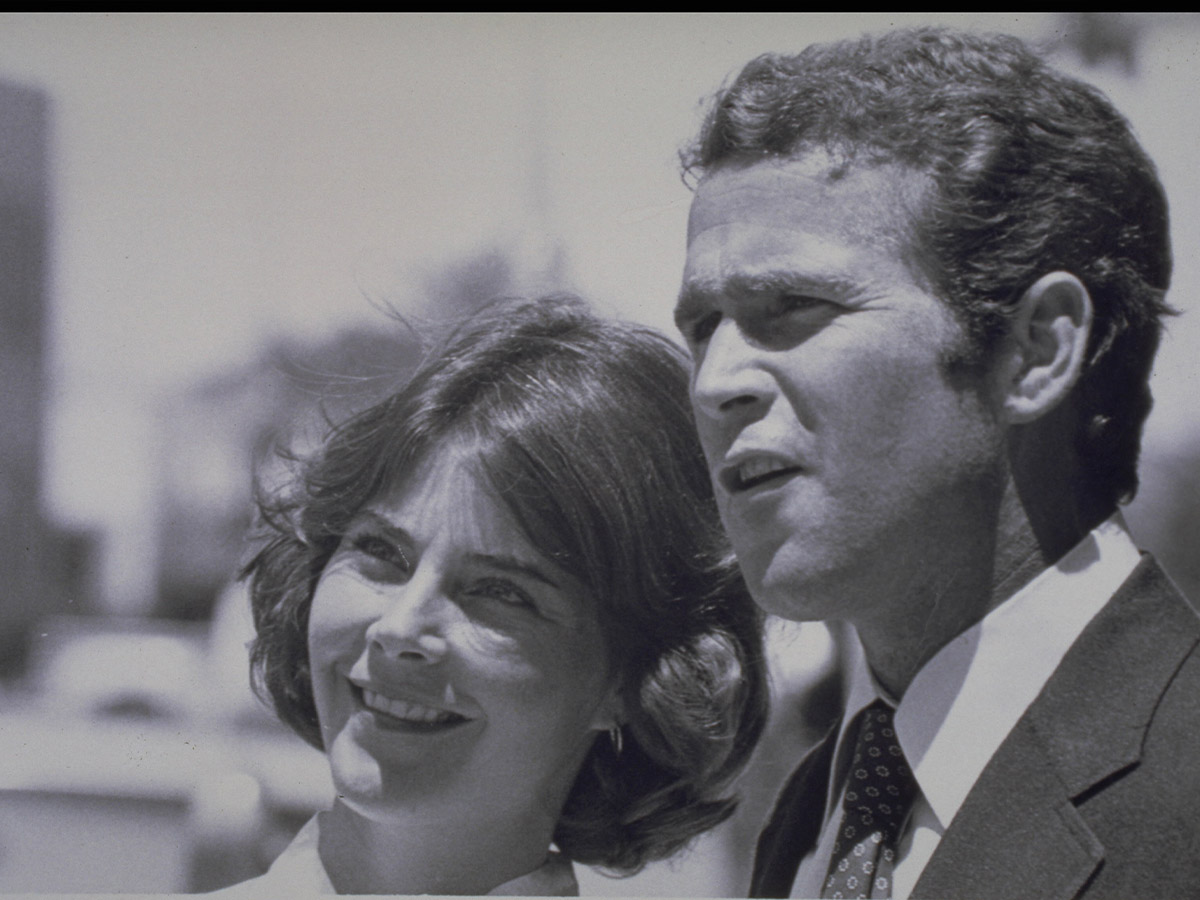
During her time as First Lady from 2001 to 2009, Laura Bush made education and literacy a top priority. She launched initiatives like "Ready to Read, Ready to Learn" to promote learning among students. Additionally, in the wake of the 9/11 attacks, she played a crucial role in comforting the nation and emphasizing the importance of maintaining a sense of normalcy and routine for children.
Hillary Rodham Clinton, First Lady to Bill Clinton (1993-2001)

Bill and Hillary met as students at Yale Law School in 1971 and married four years later. Hillary Clinton was a highly active and controversial First Lady—primarily because of just how active a role she played behind the scenes of her husband's presidency. She played a key role in healthcare reform efforts and later became a U.S. Senator, Secretary of State, and the Democratic nominee for President in 2016.
Barbara Bush, First Lady to George H. W. Bush (1989-1993)

Barbara Bush was admired for her quick wit and playful sense of humor, and she also dedicated herself to championing literacy and education. Her tireless efforts in these areas left an indelible mark on her legacy.
Nancy Davis Reagan, First Lady to Ronald Reagan (1981-1989)
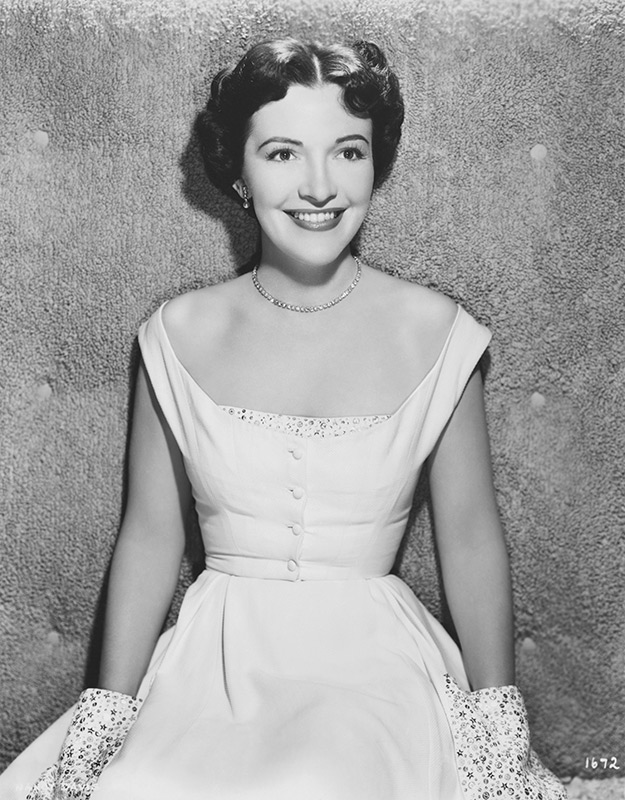
Nancy Reagan was famous for her influential "Just Say No" anti-drug campaign. Not only was she a staunch advocate for her husband's policies, but she also played a pivotal role in shaping and supporting his political career.
Rosalynn Carter, First Lady to Jimmy Carter (1977-1981)
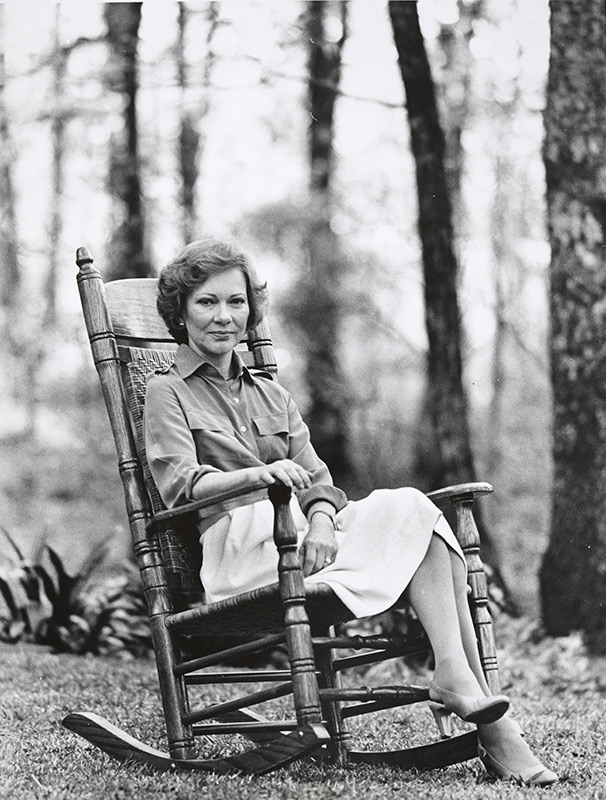
During her husband's administration, Rosalynn Carter dedicated her efforts to mental health issues. She staunchly advocated for the Equal Rights Amendment, championing equality for all. Her involvement in international diplomacy showcased her global influence and commitment to fostering positive relations between nations.
Betty Ford, First Lady to Gerald Ford, (1974-1977)
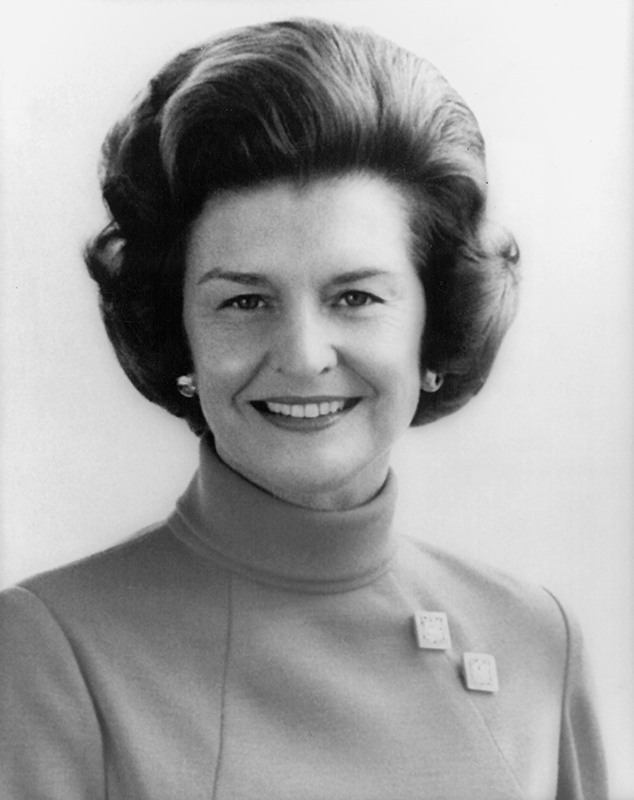
Betty Ford championed women's rights and raised awareness about breast cancer. Additionally, she played a significant role in establishing the Betty Ford Center, a renowned facility providing support and treatment for individuals struggling with addiction.
Pat Nixon, First Lady to Richard Nixon (1969-1974)
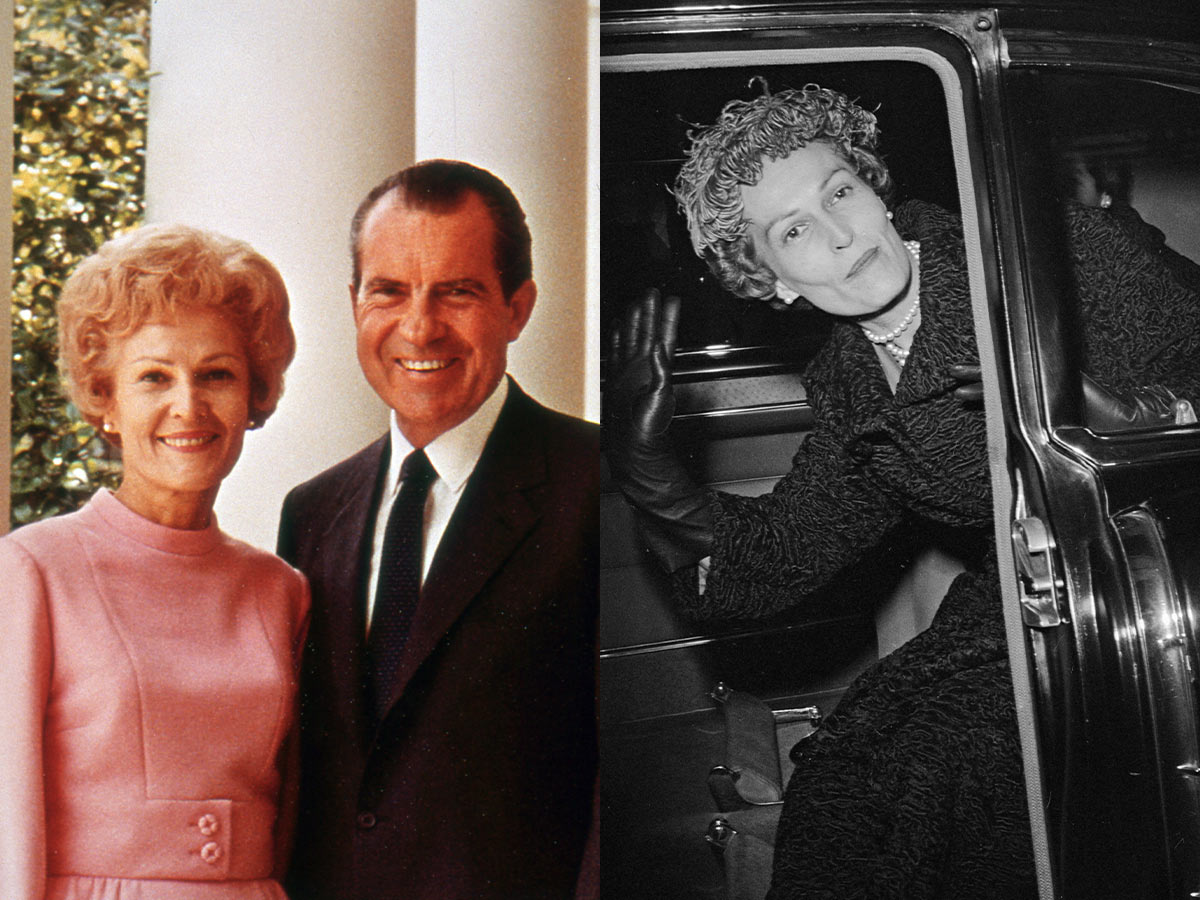
Despite her husband's famous political blunders, Pat Nixon spent her time as First Lady visiting wounded soldiers and their families during the Vietnam War, promoting volunteerism and education. She was also a champion for the arts, hosting cultural events at the White House and advocating for increased funding for the National Endowment for the Arts.
Claudia "Lady Bird" Johnson, First Lady to Lyndon B. Johnson (1963-1969)
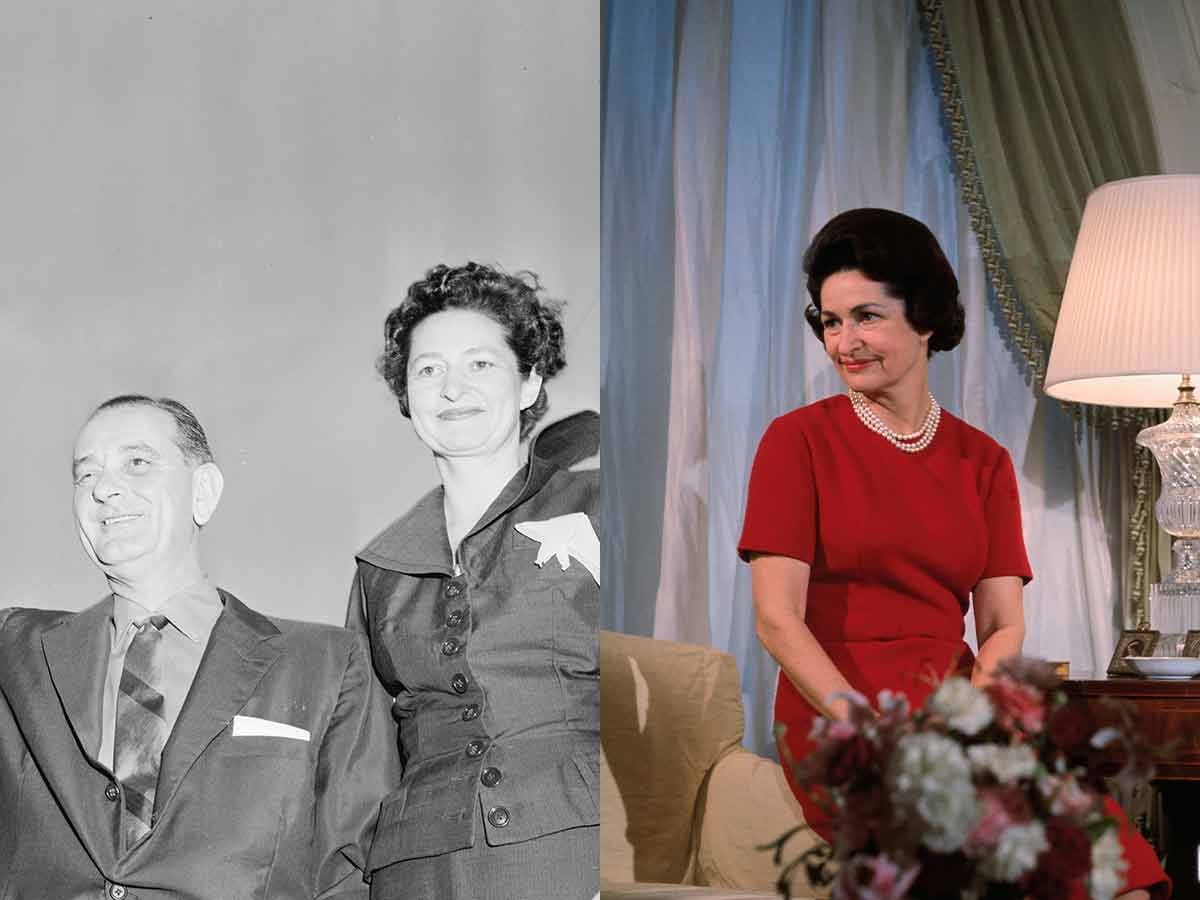
Claudia "Lady Bird" Johnson dedicated herself to environmental conservation and created "garden highways" by planting wildflowers along highways. She also actively supported the Civil Rights Act of 1964 and advocated for the Great Society programs, demonstrating that the First Lady's role can be a powerful platform for positive social change.
Jackie Kennedy Onassis, First Lady to John F. Kennedy (1961-1963)
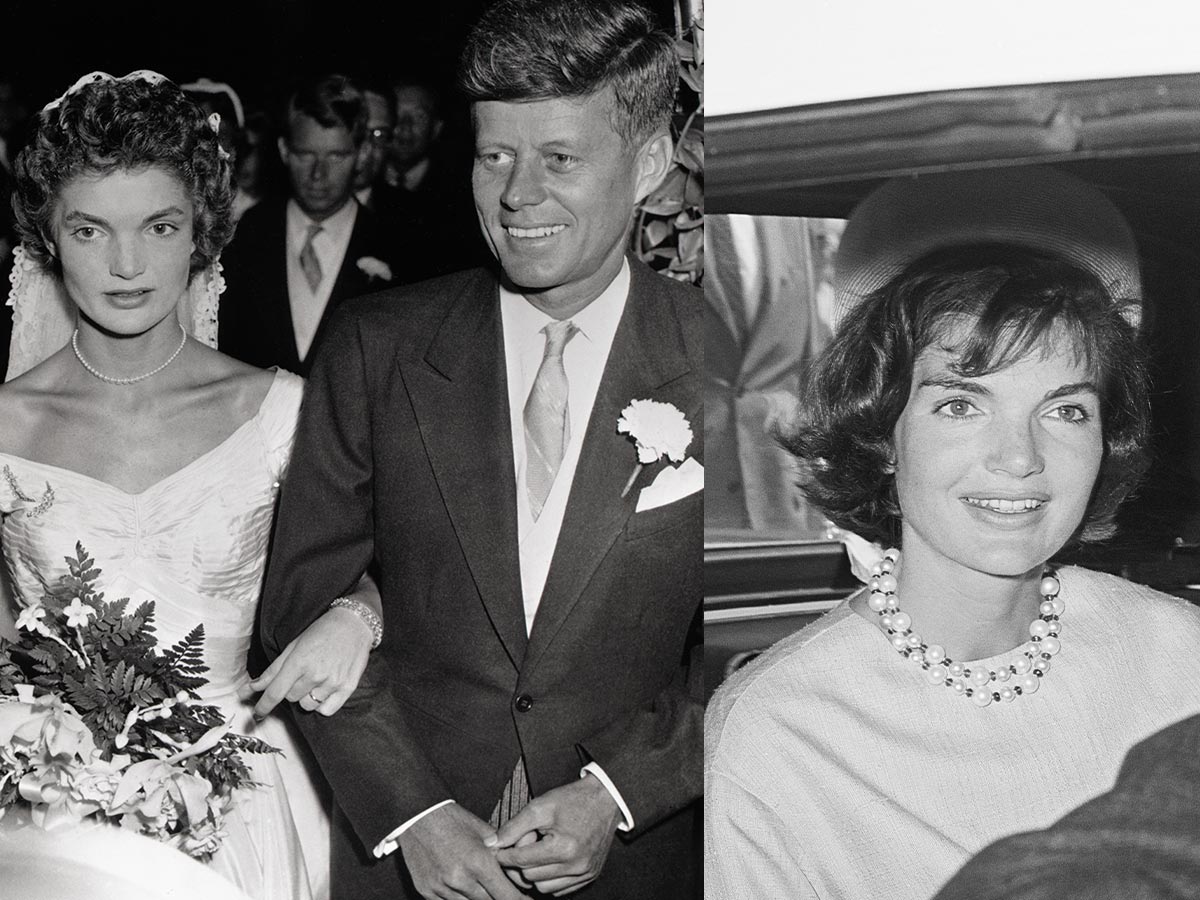
Jacqueline Kennedy, one of the most memorable First Ladies, left a lasting fashion legacy during her time in the White House. Her love for history and art, often overshadowed, was a driving force behind the White House's restoration.
Mamie Eisenhower, First Lady to Dwight D. Eisenhower (1953-1961)
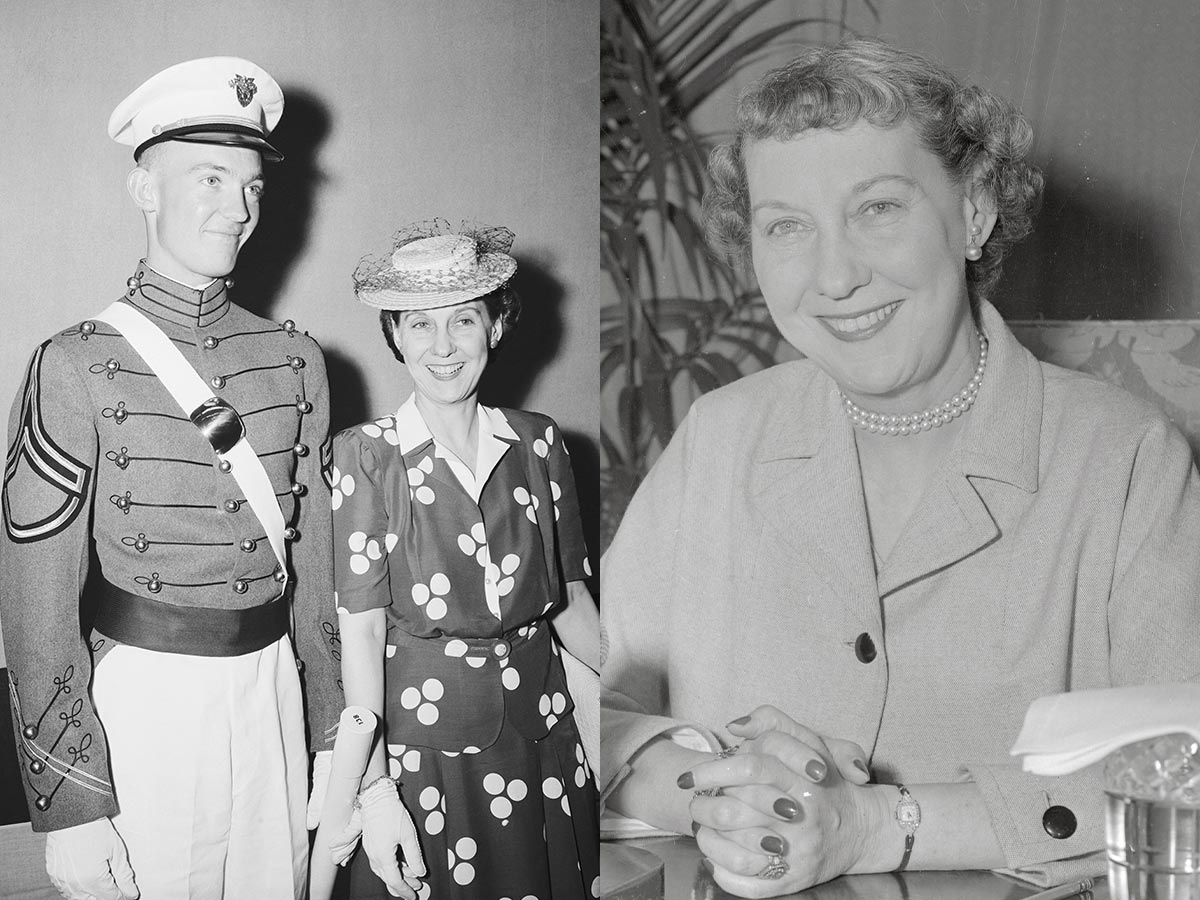
Mamie Eisenhower was well known for her penchant for pink, which she often peppered throughout her wardrobe. Her put-together looks may have gotten attention, but her fashion sense was just one aspect of her larger-than-life persona, though. Mamie was an active participant in her husband's social events, attending everything from cocktail parties to state dinners, and she was always the life of the party.
Bess Truman, First Lady to Harry S. Truman (1945-1953)

As the wife of President Harry Truman, Bess Truman preferred to keep a low profile and focus on her family and personal privacy. While she certainly supported her husband during his presidency, she didn't seek out the spotlight, instead content to stay behind the scenes and simply do her part to help her husband and her country. Whether she was working to support military families or simply spending time with her grandchildren, Bess Truman lived a life of quiet dedication and commitment to her loved ones.
Eleanor Roosevelt, First Lady to Franklin D. Roosevelt (1933-1945)
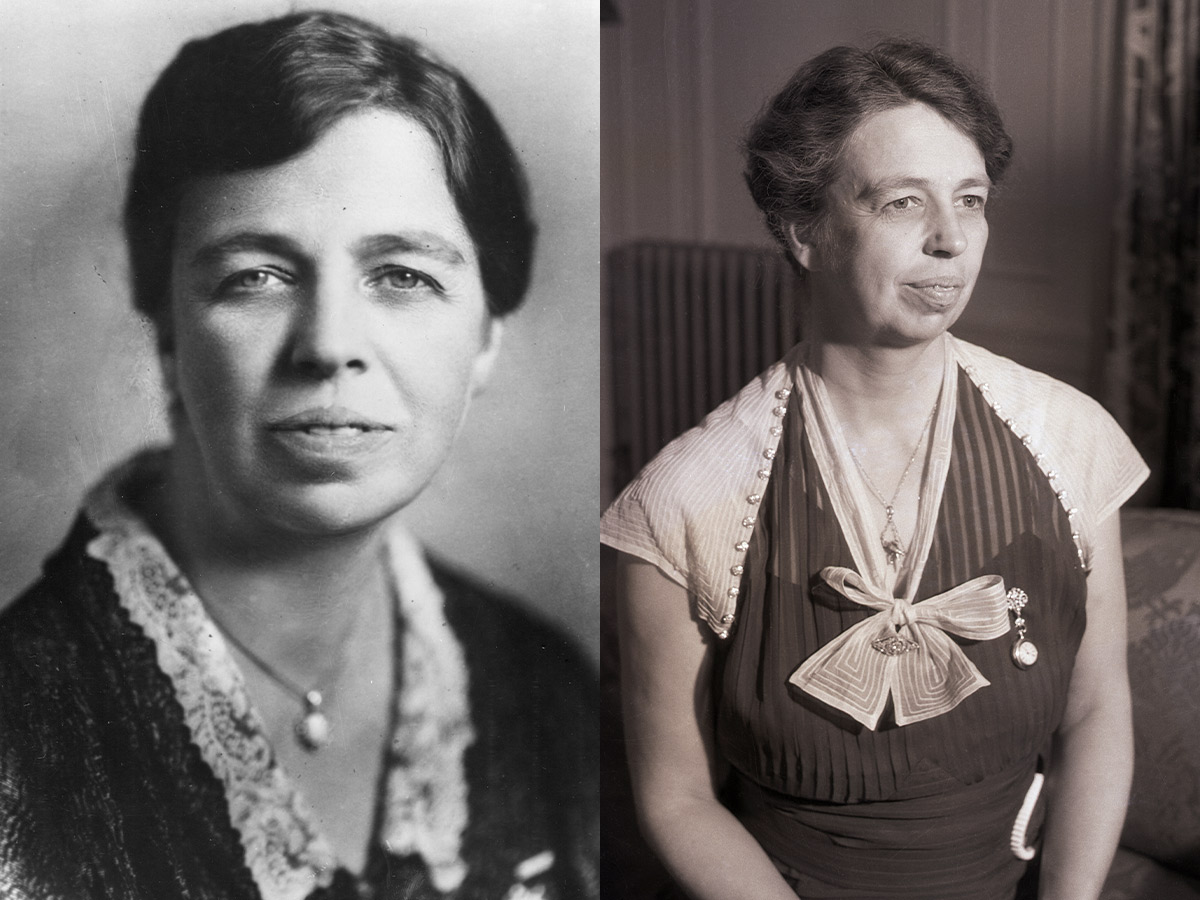
Eleanor Roosevelt may have been a First Lady, but she was anything but traditional. This woman was a powerhouse for civil rights, women's rights, and social justice. She believed firmly in the principles of equality and fairness for every human being, regardless of race, gender, or social status. Eleanor believed that her platform gave her a unique opportunity to make a difference in the world. Her legacy lives on to this day, inspiring us to fight for what's right and never give up hope for a better tomorrow.
Lou Henry Hoover, First Lady to Herbert Hoover (1929-1933)
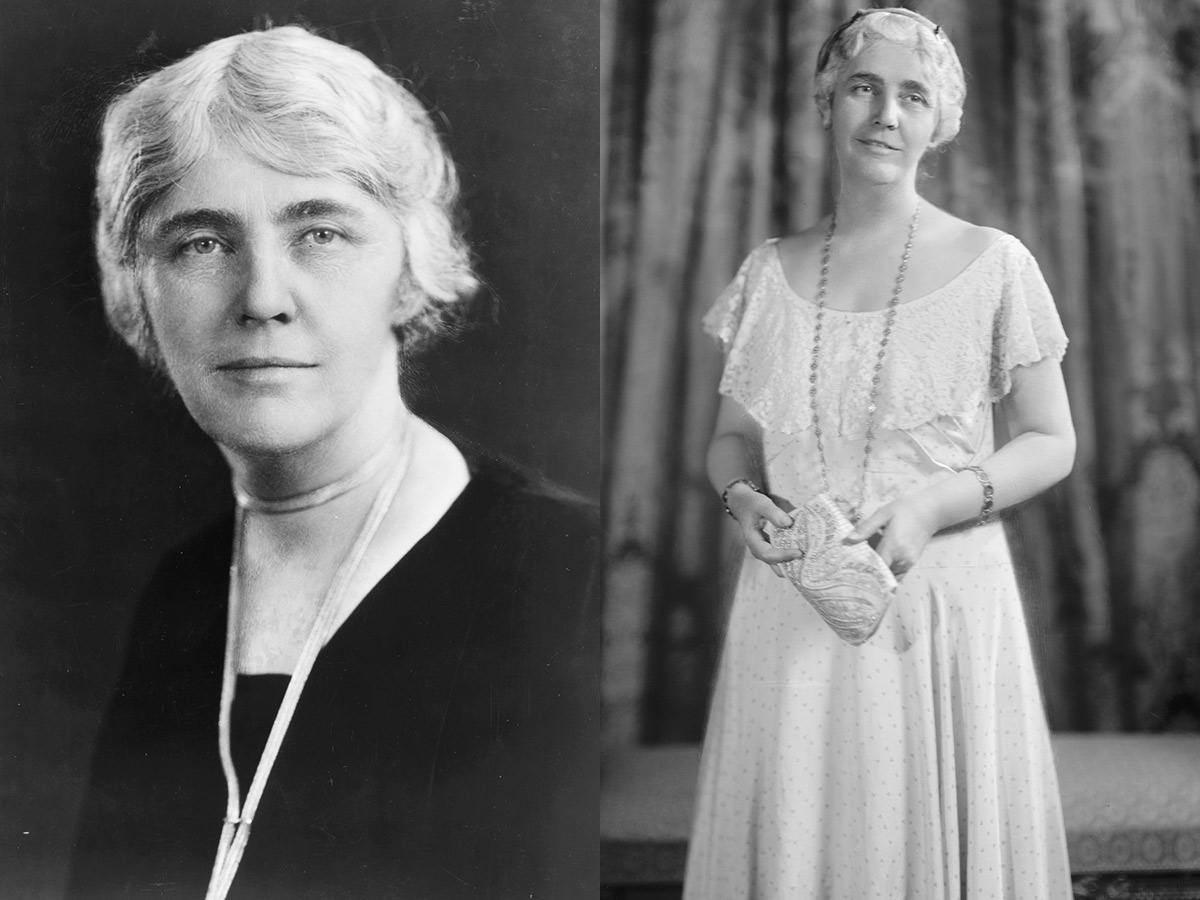
Lou Hoover was a force to be reckoned with. Not only was she known for her humanitarian efforts, but blazed a trail as the first First Lady to make regular radio broadcasts. Her unique platform allowed her to speak out about important issues and advocate for those in need. Lou Hoover was clearly ahead of her time.
Grace Goodhue Coolidge, First Lady to Calvin Coolidge (1923-1929)
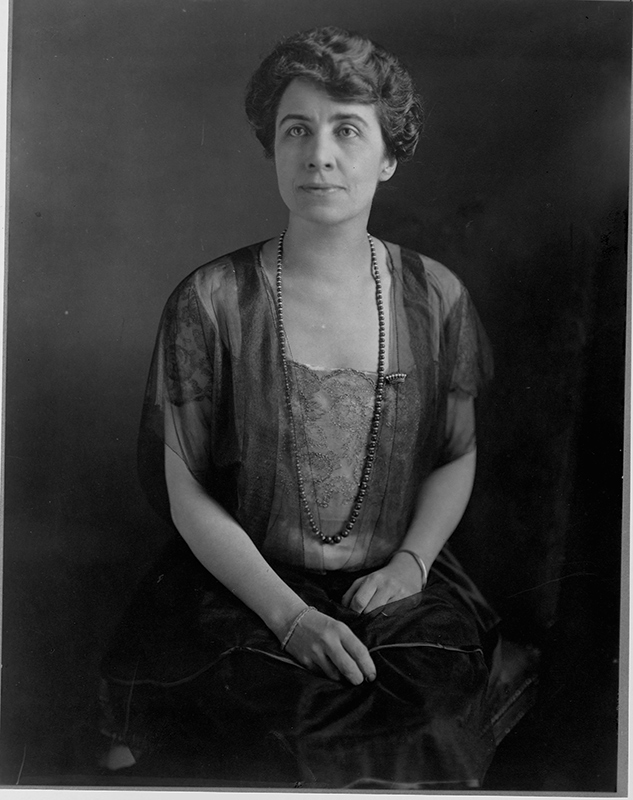
Grace Coolidge's quiet demeanor held a special charm during her time in the White House. She supported her husband's political career while cultivating a preference for a more private life away from the public eye. Her more private approach to life was a refreshing departure from the brashness of many political figures of her time.
Florence Kling Harding, First Lady to Warren G. Harding (1921-1923)
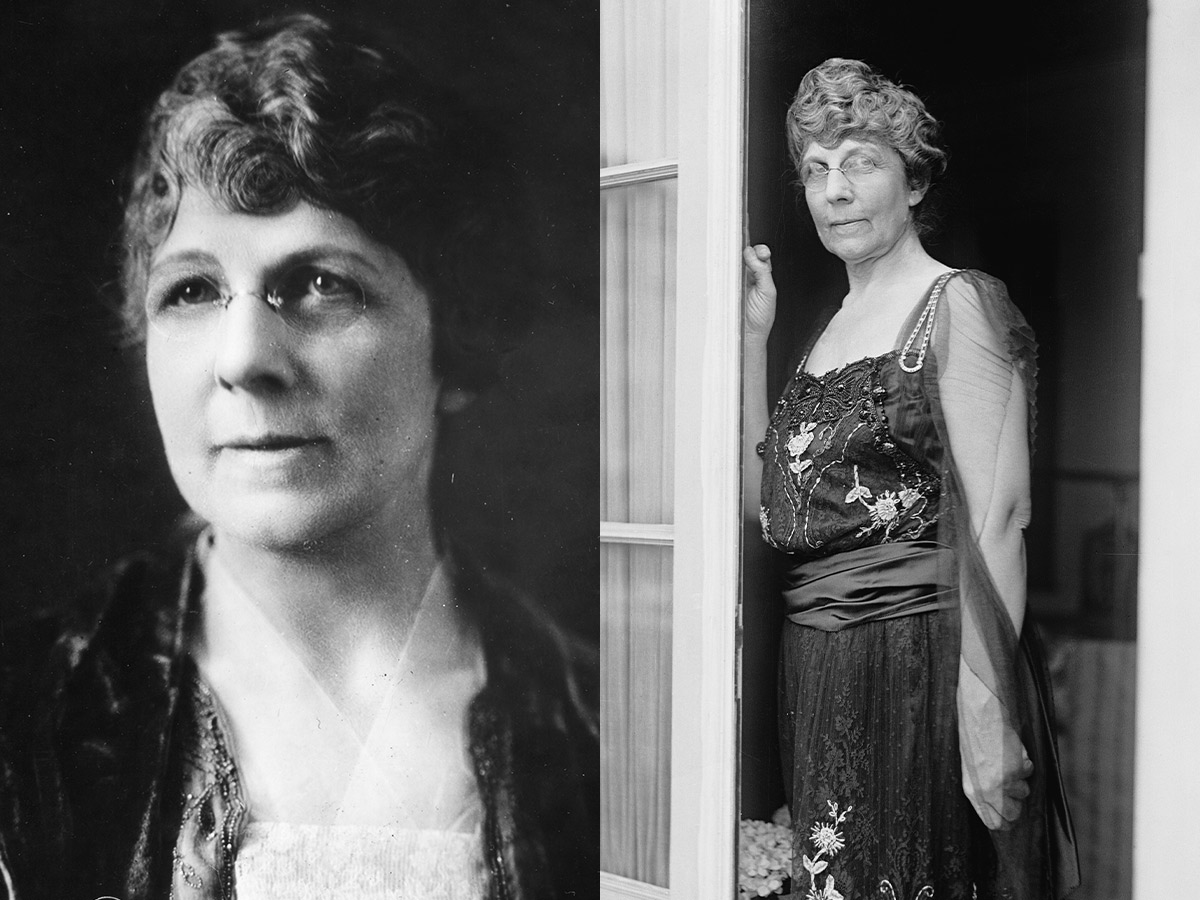
In a landmark moment in American history, Florence Harding became the first First Lady to cast her vote in a presidential election. (Wonder who she voted for!) She was also widely known for being outspoken and taking an active role in her husband's presidential campaign. She spoke her mind freely, bold for a woman of her time—earning her both supporters and detractors.
Edith Bolling Galt Wilson, First Lady to Woodrow Wilson (1915-1921)

Edith Wilson had an unparalleled impact on her husband's presidency. She served as a de facto president during her husband Woodrow Wilson's incapacitation after his stroke. She managed his schedule, as well as his public image, and influenced decision-making. Her role in shaping America during this tumultuous time cannot be overstated.
Ellen Axson Wilson, First Lady to Woodrow Wilson (1913-1914)

Ellen Wilson, the first wife of President Woodrow Wilson, was a strong advocate for housing reform, which was a pressing issue at the time. Ellen saw the need for change and worked to improve the lives of the American people. She also played a significant role in shaping her husband's domestic policies. Sadly, her time in the White House was cut short by her untimely death in 1914. Nevertheless, her legacy lives on, and her contributions to American society continue to inspire future generations.
Helen Herron Taft, First Lady to William Howard Taft (1909-1913)
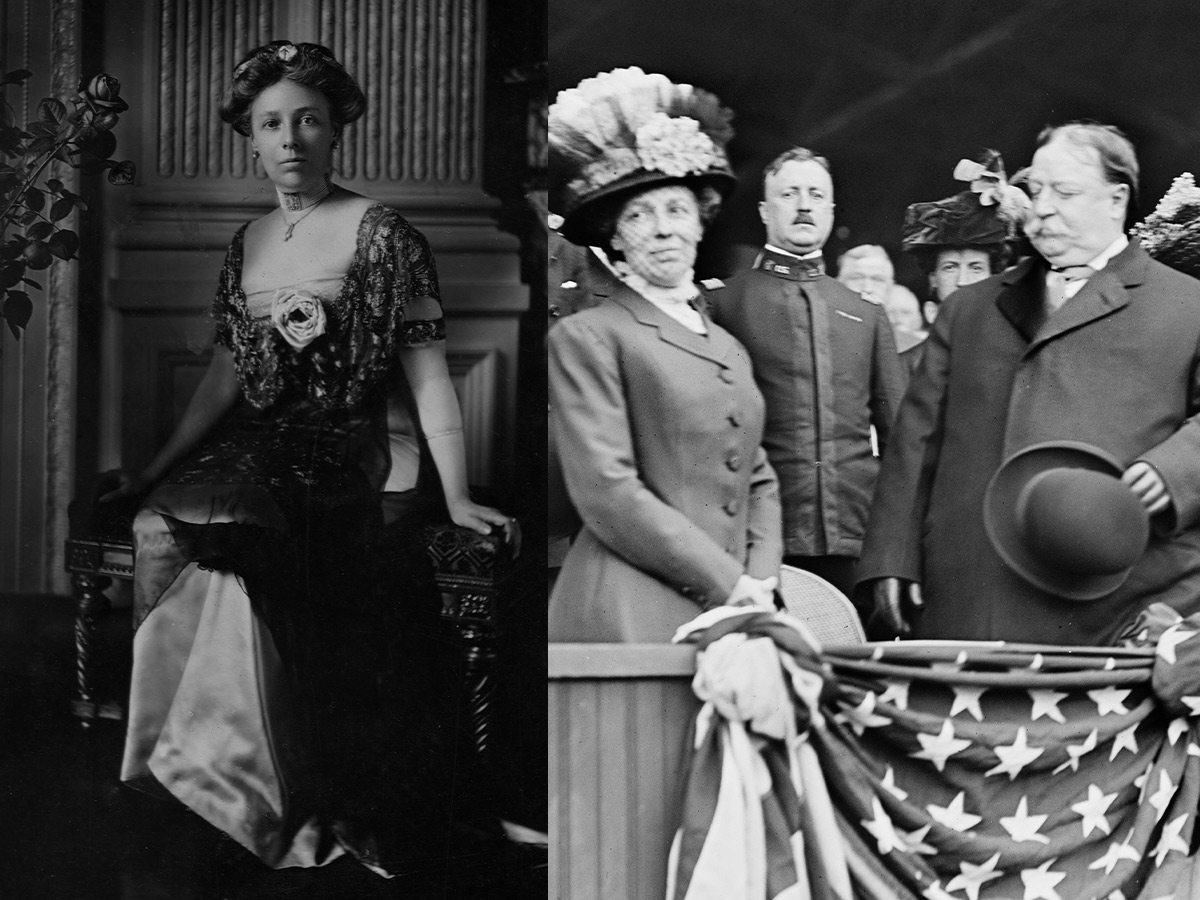
Helen Herron Taft, First Lady to William Howard Taft, had a passion for women's suffrage that she was not afraid to pursue. She actively supported the movement and even attended rallies and marches in favor of enfranchising women. In addition to her advocacy work, Helen left her mark on the nation's capital by spearheading the planting of the famous cherry blossom trees along the Potomac River.
Edith Carow Roosevelt, First Lady to Theodore Roosevelt (1901-1909)
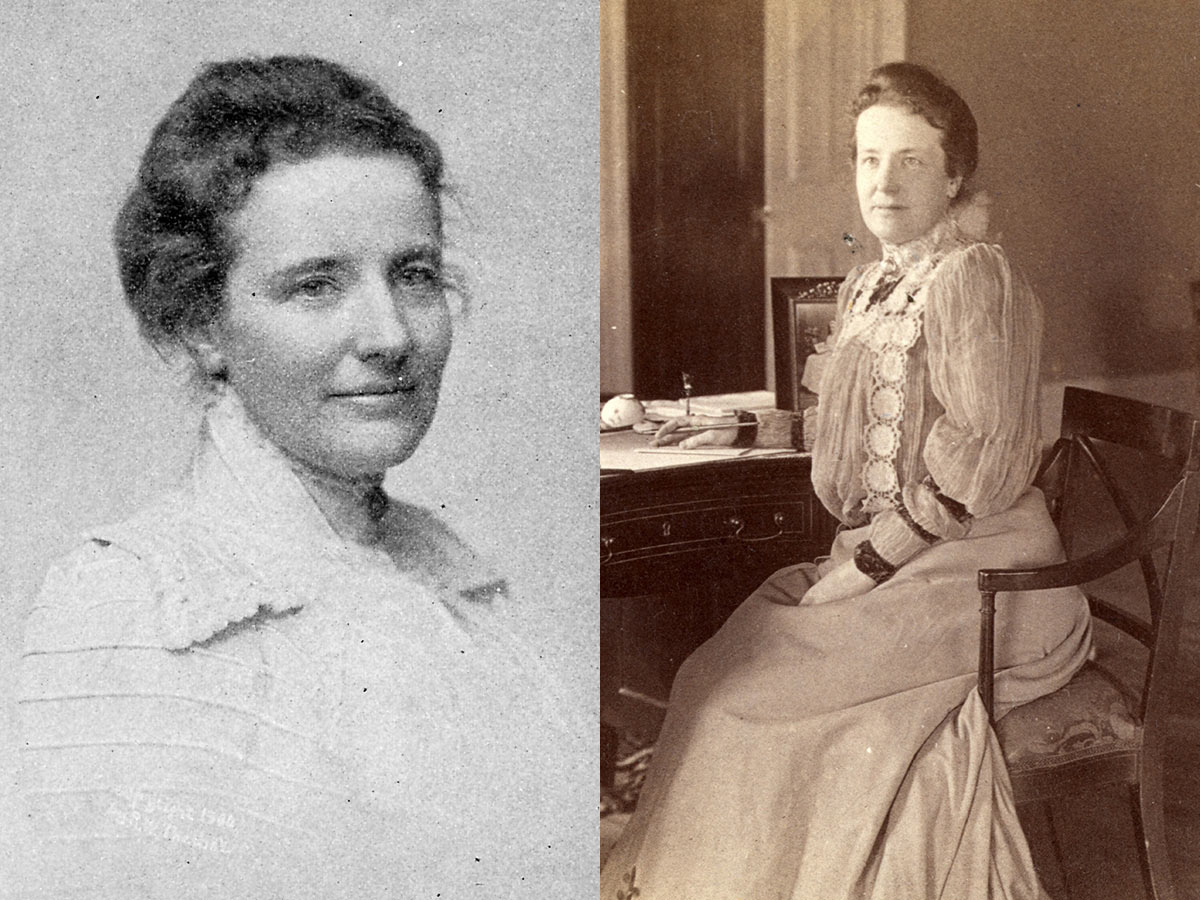
With Edith Roosevelt's boundless energy and passion for cultural and social issues, she brought a fresh perspective to the position of First Lady. She took an active role in the preservation of the White House, and without her efforts to protect and preserve its legacy, the White House might not be the same iconic landmark that it is today. Her example will continue to inspire generations, reminding us of the importance of embracing new ideas and engaging fully with the world around us.
Ida McKinley, First Lady to William McKinley (1897-1901)

Despite facing serious health issues throughout her life, including epileptic seizures and depression, Ida McKinley actively involved herself in her husband's political career. She became an influential advocate for people with disabilities and used her prominent position as First Lady to bring awareness to the importance of providing equal rights and opportunities to individuals with disabilities.
Frances Cleveland, First Lady to Grover Cleveland (1886-1889, 1893-1897)

Did you know that Frances Cleveland became the only First Lady to serve separate, non-consecutive terms? (Her husband, Grover Cleveland, served as the 22nd and 24th President of the United States. After losing the 1888 election, he ran again in 1892 and won.) Frances made her mark through social grace, hosting vibrant events at the White House, and setting fashion trends. While not involved in formal policy, she supported charitable causes and played a key role in shaping her husband's positive public image, contributing to his political success.
Caroline Harrison, First Lady to Benjamin Harrison (1889-1892)

Caroline Harrison was ahead of her time. She advocated for women's rights and education (two areas that still clearly need plenty of work today). Caroline was passionate about creating better opportunities for women across the country, and she was also the first First Lady to have her voice recorded. On March 18, 1892, Thomas Edison visited the White House to record a message on his invention, the phonograph, from President Benjamin Harrison. After successfully recording the President's voice, Edison then suggested recording Caroline's voice as well. The recording consisted of a short poem and some introductory remarks.
Mary Arthur McElroy, First Lady to Chester A. Arthur (1881-1885)

Mary took on the responsibilities of the First Lady from 1881 to 1885 after her brother's wife, Ellen Arthur, passed away from pneumonia months before her husband took office (initially as Vice President). While understandably hesitant about her new role, Mary quickly found her footing as a First Lady. She was particularly passionate about renovating and redecorating the White House, and her efforts made the public spaces more welcoming and inviting.
Lucretia Garfield, First Lady to James A. Garfield (1881-1881)
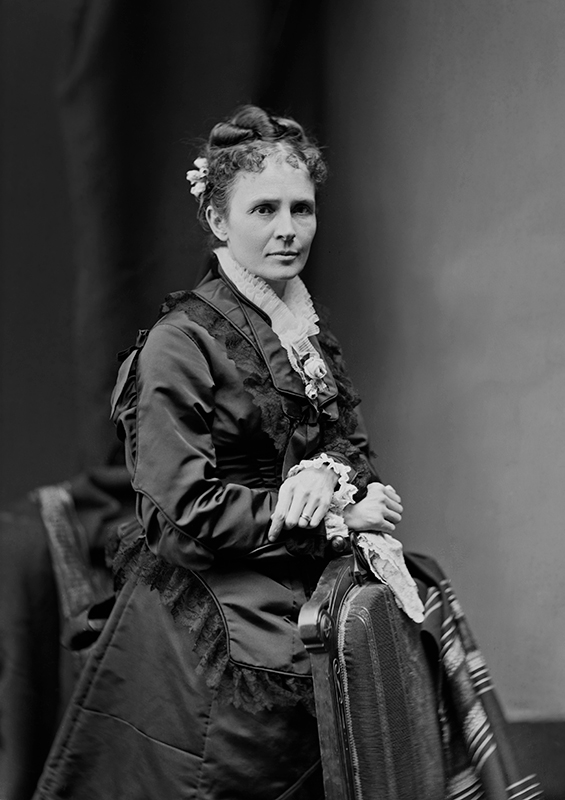
Lucretia Garfield served as First Lady for just a short period, cut short by her husband's assassination. During her time in the White House, Lucretia chose to focus on raising her children and preserving the legacy of her late husband. Today, she is remembered not only as the wife of President James A. Garfield, but for her strength and grace in the face of unimaginable tragedy.
Lucy Hayes, First Lady to Rutherford B. Hayes (1877-1881)
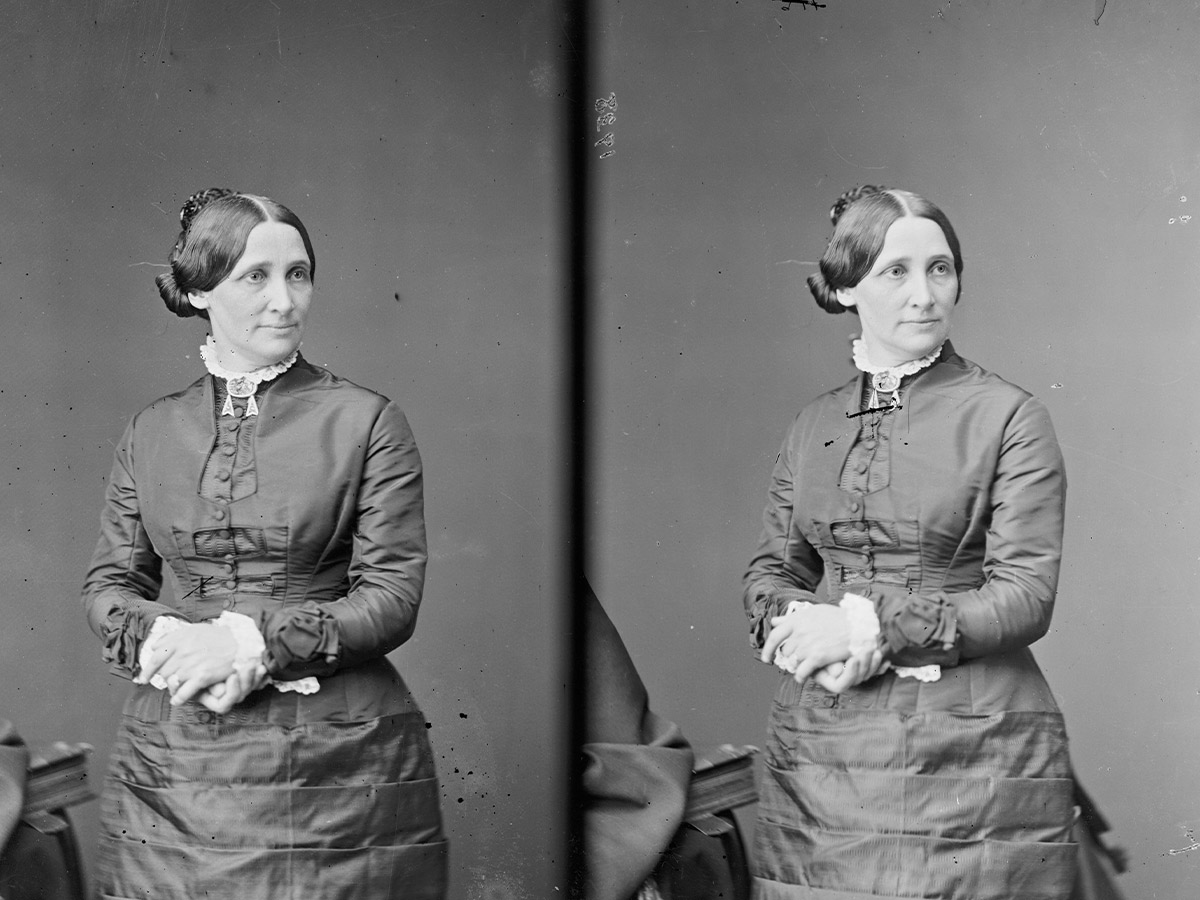
Lucy Hayes was a proponent of various social issues, including education, advocating for women's rights and the disadvantaged. This First Lady knew the importance of giving a voice to the marginalized, and she used her platform to do just that. Her legacy lives on as a testament to what an individual can accomplish when they use their voice for the voiceless.
Julia Grant, First Lady to Ulysses S. Grant (1869-1877)

While her husband, President Ulysses S. Grant, focused on politics and governing the country, Julia was focused on bringing people together through social events. She was known for her warmth and kindness, and this popularity eventually led to her being nicknamed "The First Lady of the Land." Her influence extended far beyond just her typical duties, with many historians crediting her with helping to shape the role of First Lady as we know it today.
Eliza Johnson, First Lady to Andrew Johnson (1865-1869)
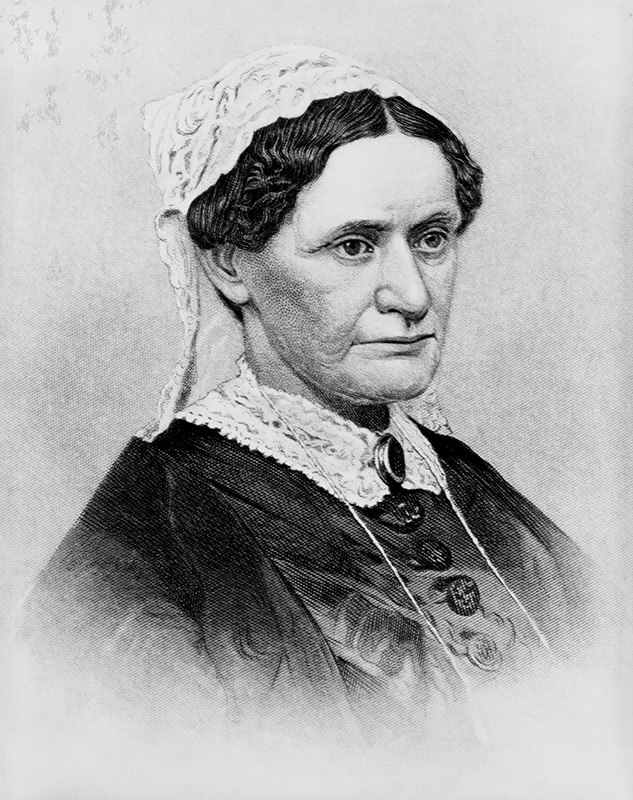
Though her husband's presidency was rife with controversy, it's worth noting that his wife, Eliza, faced her own set of challenges during her tenure as First Lady. Eliza suffered from health issues that kept her in the background of her husband's political events. However, while she may not have been as prominently featured as some of her predecessors, Eliza steadfastly supported her husband during that tumultuous period of Reconstruction. This was a time of significant social upheaval and political strife, but Eliza was there for her husband, offering him guidance and comfort when he needed it most.
Mary Todd Lincoln, First Lady to Abraham Lincoln (1861-1865)
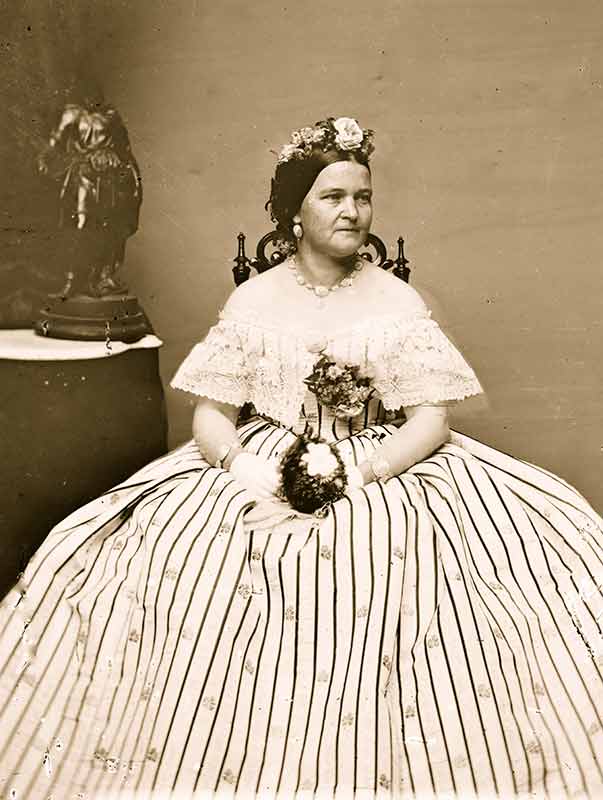
Saying Mary Todd Lincoln had a tumultuous time as First Lady would be an understatement. She faced an unimaginable amount of personal tragedy with the loss of two of her sons and of course, later on, her husband. She actively supported Lincoln's leadership during the Civil War, and her advocacy for the Union cause was widely recognized and celebrated.
Harriet Lane, First Lady to James Buchanan (1857-1861)
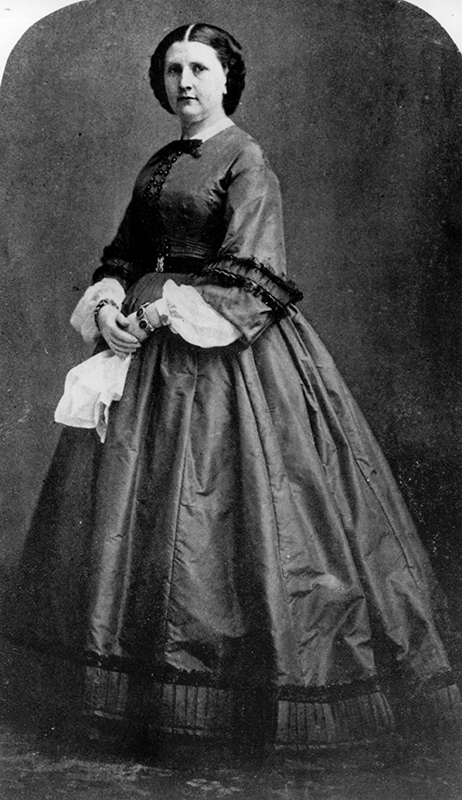
Harriet Lane, the niece of President James Buchanan, served as the de facto First Lady during her uncle's time in the White House. She was well-educated, charming, and known for her grace, and she played a significant role in social events.
Jane Pierce, First Lady to Franklin Pierce (1853-1857)

Jane Pierce was a deeply religious and private woman. She and Franklin lost their son just before her husband assumed the presidency, so Jane's time as First Lady was marked by sadness and a longing to be left alone. Despite her struggles, Jane remained committed to her faith and her love for her family.
Abigail Powers Fillmore, First Lady to Millard Fillmore (1850-1853)
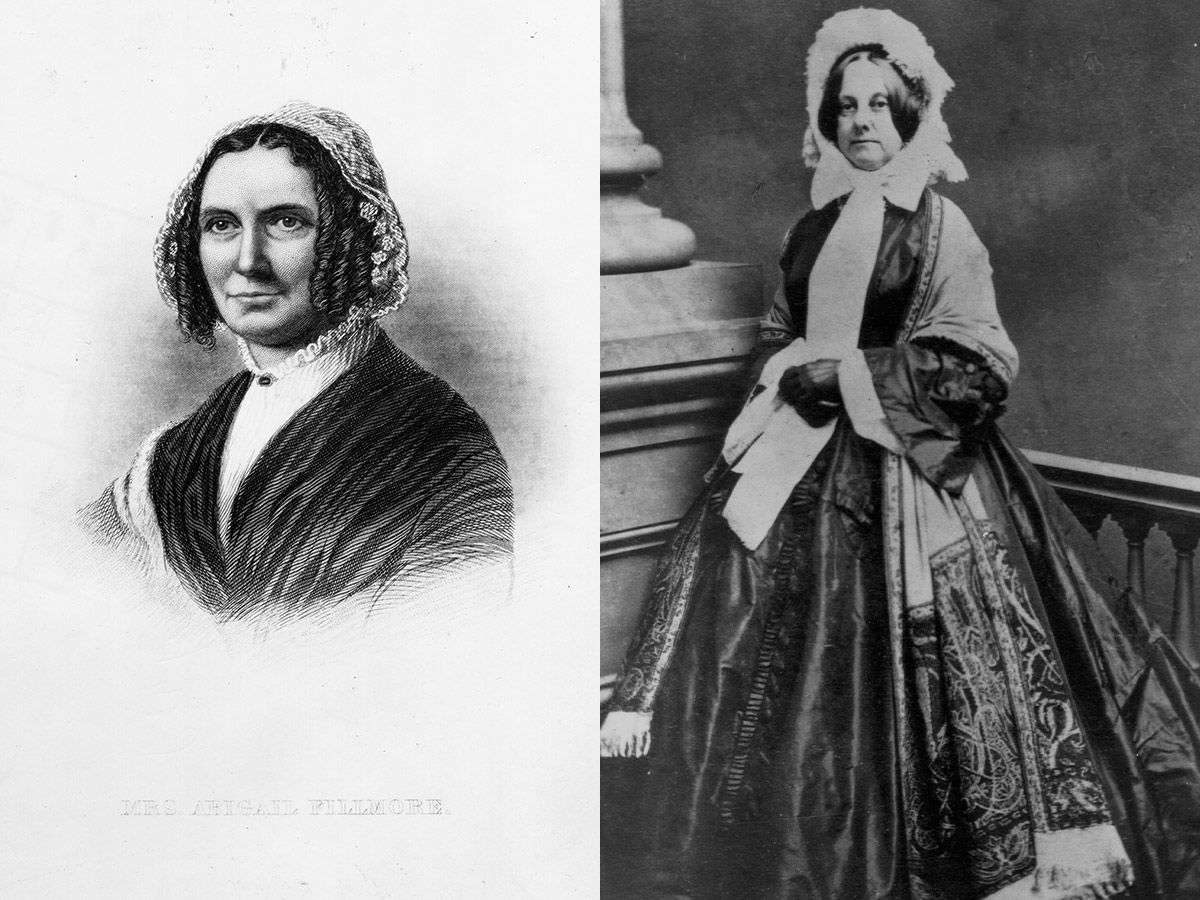
Abigail Fillmore wore many hats during her time in the White House. Her passion for education was evident in everything she did, and she was a fierce advocate for women's education. She also had a gift for creating a warm, welcoming atmosphere that made the White House a vibrant cultural center. From orchestral concerts to lectures on science and technology, Abigail filled the White House with meaningful events that brought people together and helped move the country forward.
Margaret Smith Taylor, First Lady to Zachary Taylor (1849-1850)
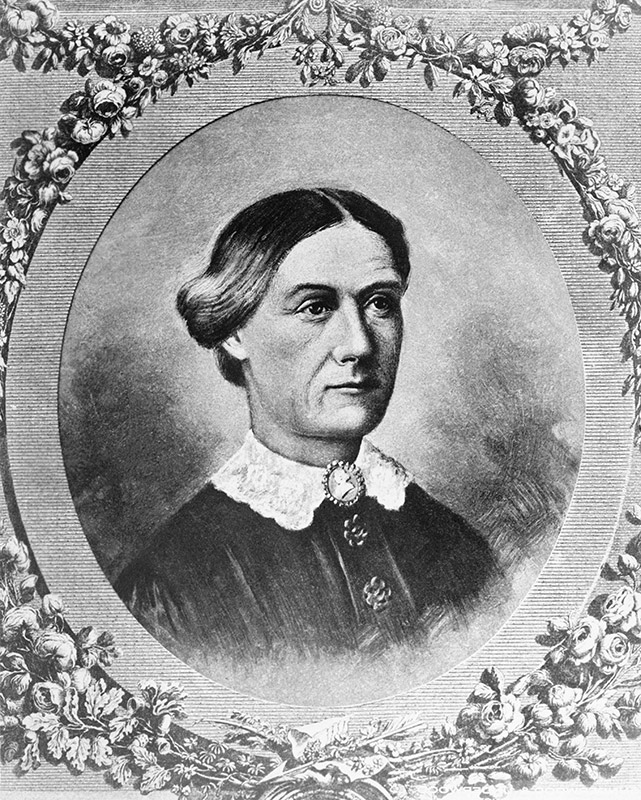
First Lady Margaret Smith was notorious for avoiding social events and shying away from the public eye. Despite her introverted nature, Margaret impacted the White House during her time as First Lady. Her focus was on promoting education, and she actively supported efforts to establish colleges in Washington, D.C.
Sarah Childress Polk, First Lady to James K. Polk (1845-1849)
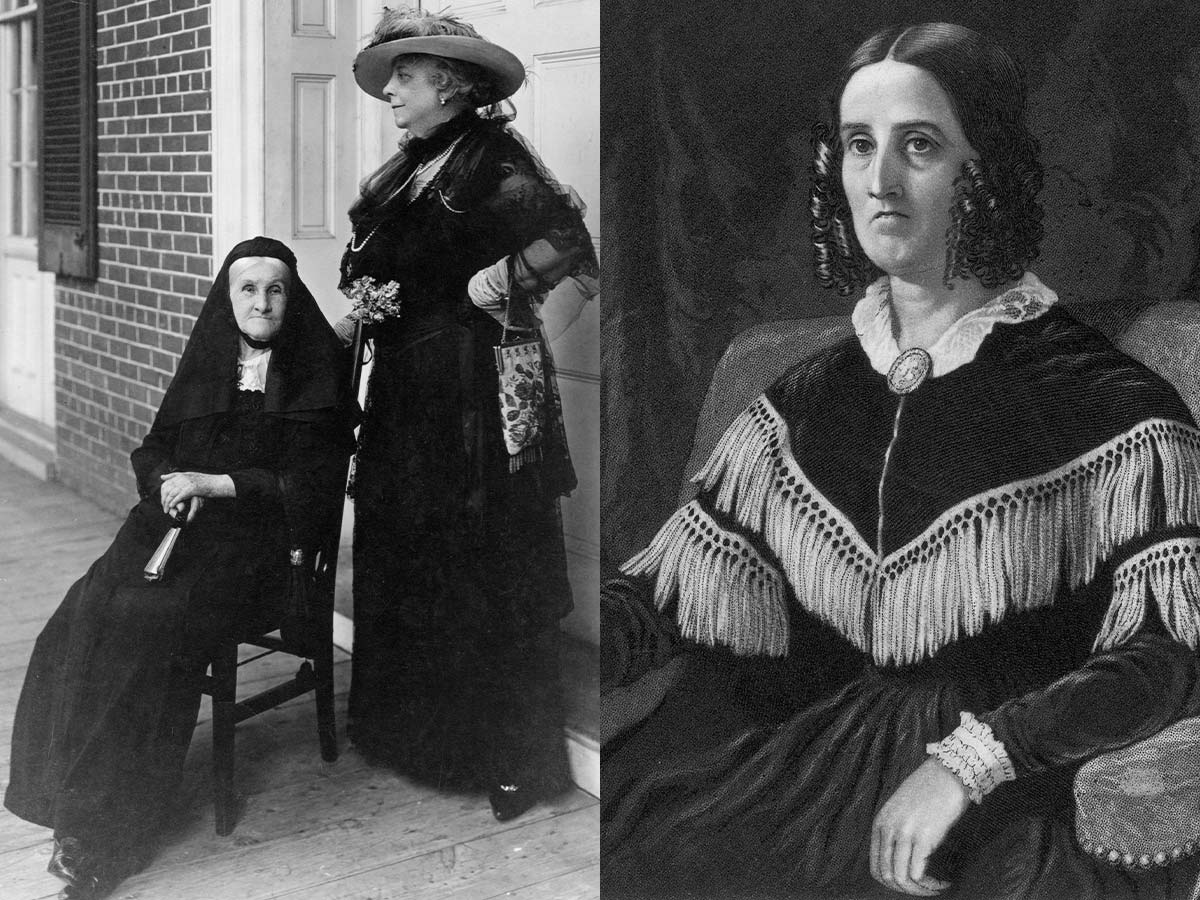
Sarah Polk actively participated in her husband's political career and shaped his policies. Her influence was felt in issues such as the annexation of Texas and territorial expansion, which were critical events during James K. Polk's presidency. Sarah Polk's leadership and intelligence were unmatched, and she set a precedent for future First Ladies to take an active role in politics.
Julia Gardiner Tyler, First Lady to John Tyler (1844-1845)

Julia Tyler was the second wife of President John Tyler, and she was a force to be reckoned with. Her vivacious personality and flair for entertaining made her a favorite among Washington's elite. But there was much more to Julia than just her keen social skills; she played an instrumental role in pushing for the annexation of Texas.
Priscilla Cooper Tyler, First Lady to John Tyler (1842-1844)
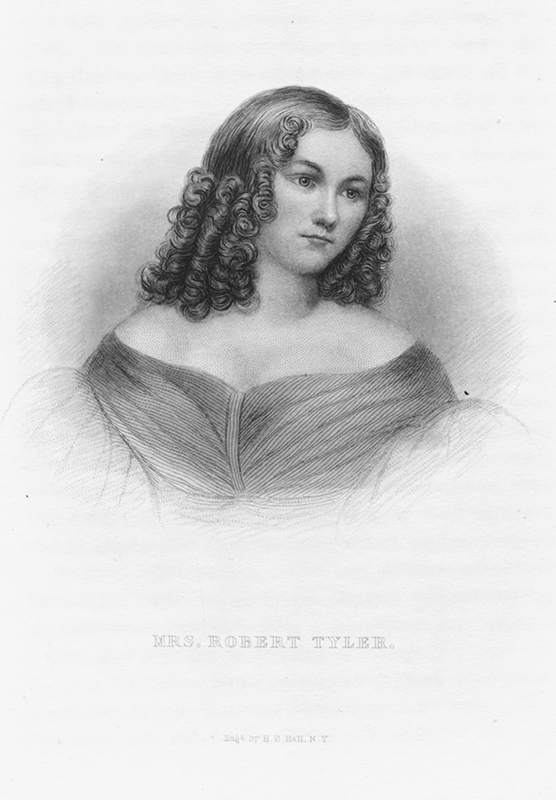
Priscilla Cooper Tyler, President John Tyler's daughter-in-law, served as his First Lady between 1842-1844. She first began helping out with hosting duties while First Lady Letitia Tyler fell ill, took over the role after she passed, and carried out her duties until her father-in-law's marriage to Julia Gardner—who took over First Lady duties the last couple years of her husband's presidency. She was reportedly close to her father-in-law and took her role quite seriously. In March of 1842, while seven months pregnant, Priscilla hosted a party at the White House—with around 3,000 guests—to honor Washington Irving and Charles Dickens.
Letitia Christian Tyler, First Lady to John Tyler (1841-1842)
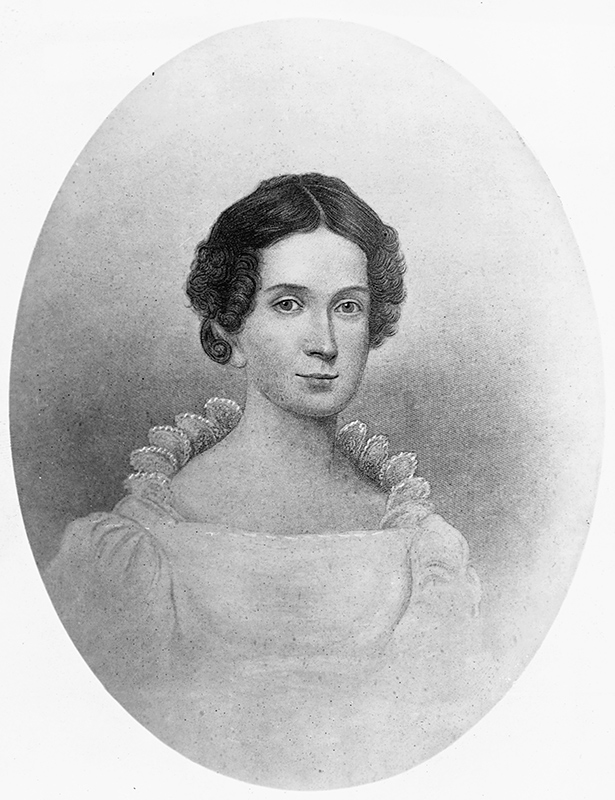
Despite her constant struggles with poor health, she was known for her unfailing kindness and unwavering devotion to her family. It's not hard to imagine the amount of empathy and compassion she possessed, as she was a true symbol of grace and benevolence. Her legacy may have been cut short due to her untimely passing, but she did leave her mark by introducing the waltz to the White House dance floor.
Anna Tuthill Symmes Harrison, First Lady to William Harrison (1841)
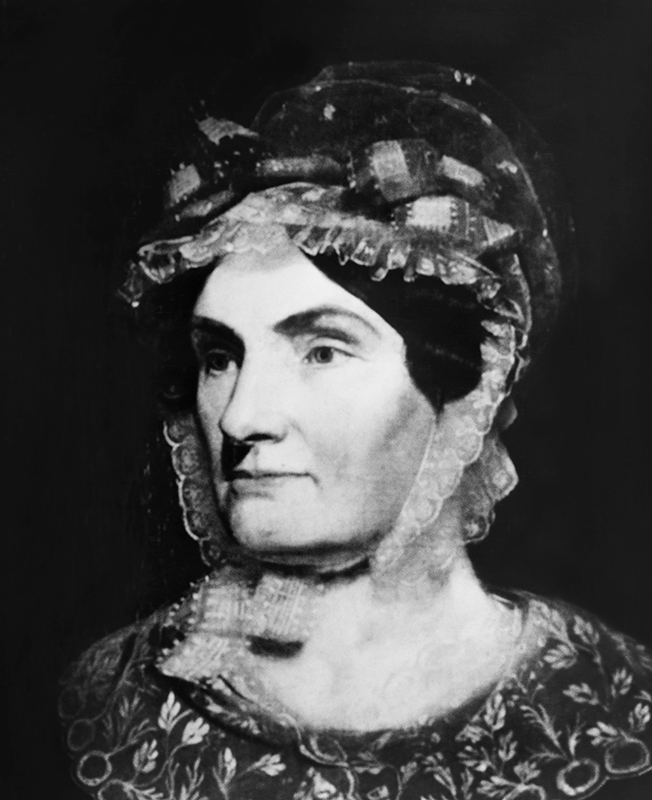
Despite her short stint as First Lady, Anna Harrison's story is an interesting one. Born in 1775 and married to Williams Harrison in 1795, Anna was supportive during her husband's political career. Unfortunately, due to William's untimely death after only 32 days in office, Anna's contributions were limited. Despite this, Anna lived a long and fulfilling life, passing away at the remarkable age of 88 in 1864.
Angelica Singleton Van Buren, First Lady to Martin Van Buren (1837-1841)
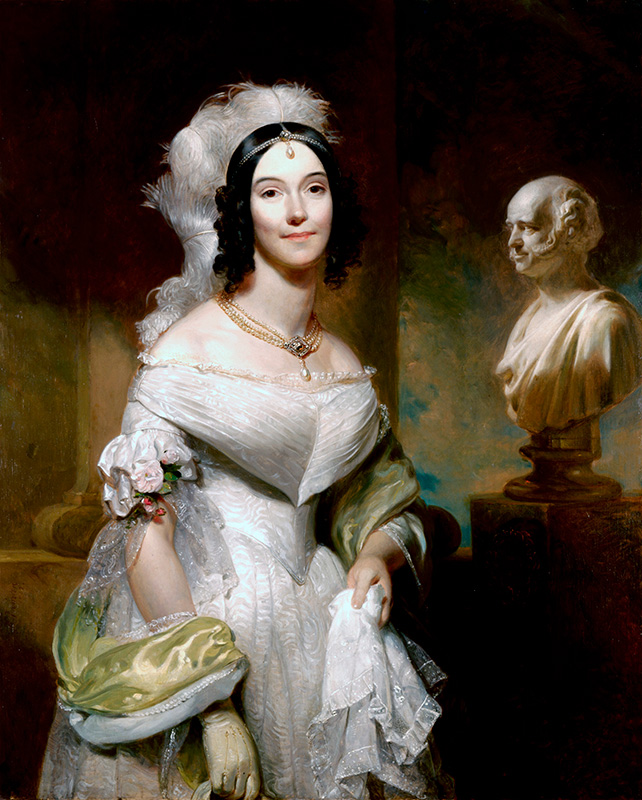
Hannah Van Buren faced criticism for being a widowed daughter-in-law. Despite this, she maintained a low profile and focused on her family, earning respect for her dignity and humility. Today, she is remembered for her quiet strength, a trait that sets her apart from others who may have succumbed to the pressure of public opinion.
Rachel Jackson, First Lady to Andrew Jackson (1829)

Although Rachel Jackson passed away just before her husband, Andrew Jackson, assumed the presidency, she was known for her kind nature and willingness to help others. Her death came as a devastating blow to President Jackson, who had always valued her support and companionship.
Louisa Catherine Adams, First Lady to John Quincy Adams (1825-1829)
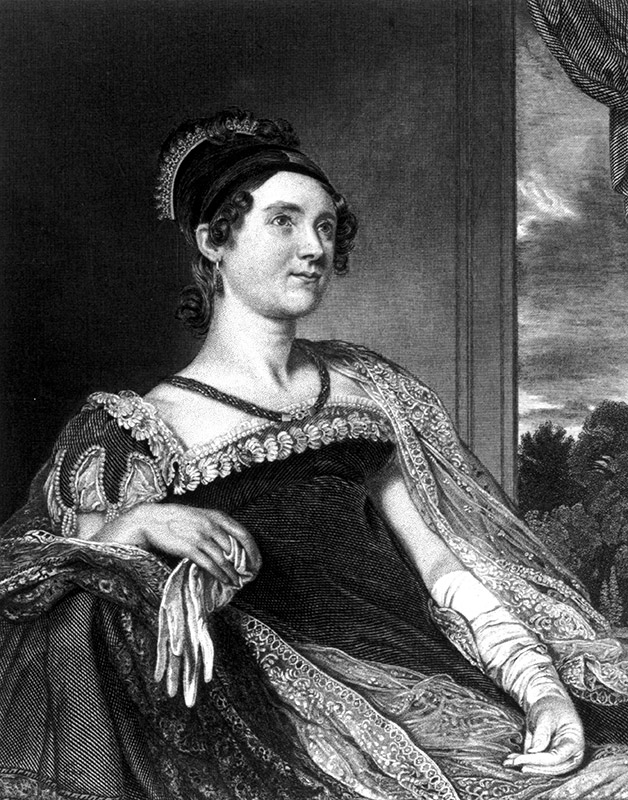
Louisa Adams lived at a time when people looked down on those who didn't have pure American heritage. Despite the challenges she faced because of her English roots, she was determined to make a difference. Not only was she well-educated and multilingual, but she was also a driving force in her husband's diplomatic career. She actively advocated for education and the arts.
Elizabeth Kortright Monroe, First Lady to James Monroe (1817-1825)
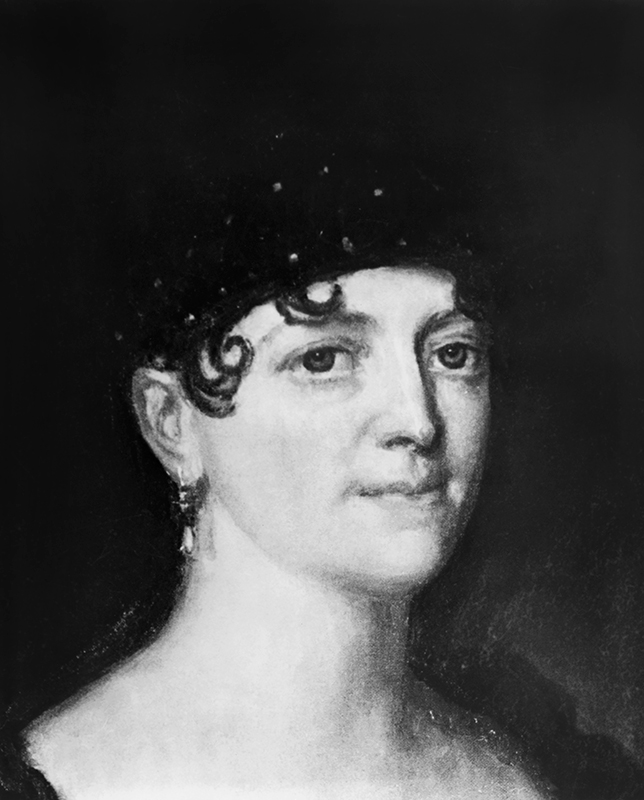
Elizabeth Monroe left a lasting impact on the White House social scene during her time as First Lady. Known for her elegance and hospitality, Elizabeth was a master at hosting events that left her guests feeling welcome and valued. What set Elizabeth apart from her predecessors was her more subdued style, which gave her events a sense of refinement and sophistication.
Dolley Payne Madison, First Lady to James Madison (1809-1817)

Beyond her typical role and duties as First Lady, Dolley was beloved by many for her charisma, wit, and connection to the people. She was known for hosting lavish White House parties and using her charm to smooth over political tensions between parties. Dolley is likely most remembered in history for saving the famous portrait of George Washington from being destroyed by British troops during the War of 1812. Her determination and bravery in the face of danger cemented her place in history as a beloved First Lady.
Martha Jefferson Randolph, First Lady to Thomas Jefferson (1801-1809)
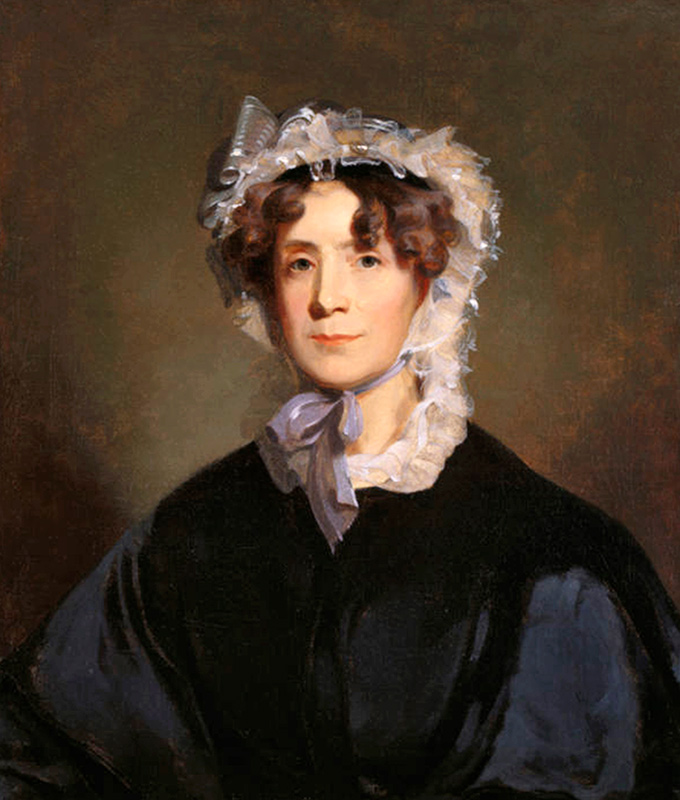
During Thomas Jefferson's presidency, his daughter, Martha Jefferson Randolph, served as First Lady. Her impact was felt through her dedication to social events at the President's House and her patronage of the arts. She also engaged in heated conversations on political matters with her father and advocated for the education of her own children and others. Despite the lesser formalization of the First Lady role, Martha made her mark on the social and cultural fabric of the presidency.
Abigail Smith Adams, First Lady to John Adams (1797-1801)

Abigail Smith was born in 1744 in Weymouth, Massachusetts. During her time as First Lady, she became a strong voice for gender equality during a time when such matters were barely at the center of the national conversation. She famously made a written plea to her husband, John Adams, when he was drafting the country's laws. "Remember the ladies," she implored, urging him to ensure a fair and just representation of women's rights. Adams was also an advocate for education, recognizing its role in enabling women to lead fulfilling and meaningful lives. Her letters to her husband provide a window into the nation's early days and First Ladies' important contributions to its growth.
Martha Washington, First Lady to George Washington, (1789-1797)

Martha Washington—the First Lady who started it all—established the standard for the role. Even though her position was unofficial during her husband's presidency, she served as a prime example of elegance and poise. Renowned for her warm hospitality, she orchestrated gatherings that fostered unity during a pivotal era in our nation's story.
 Author
Elise Williams Rikard
Last Updated: December 05, 2025
Author
Elise Williams Rikard
Last Updated: December 05, 2025